
Antofagasta: The Gateway to Chile's Northern Wonders
Explore Antofagasta, where the Atacama Desert meets the Pacific Ocean, offering stunning natural landscapes, rich mining history, and vibrant cultural experiences.
Antofagasta, situated on Chile's northern coastline, is a city where the Atacama Desert meets the Pacific Ocean. Known for its striking landscapes, Antofagasta offers a unique blend of natural beauty and urban charm. The city is famous for its clear skies, making it a prime destination for stargazing and astronomical observations. Visitors can explore the iconic La Portada, a natural stone arch formation that stands as a symbol of the city. Beyond its natural attractions, Antofagasta boasts a rich mining history. The city's economy is heavily influenced by the mining industry, and visitors can learn about this heritage at the Huanchaca Ruins and Museum. These remnants of a once-thriving silver refinery provide a glimpse into the past and offer stunning views of the coastline. For those seeking cultural experiences, Antofagasta has a vibrant arts scene. The Municipal Theater hosts a variety of performances, from traditional Chilean music to contemporary theater. The city's bustling markets and seafood restaurants offer a taste of local cuisine, with fresh catches from the Pacific Ocean being a highlight. Whether you're an adventure seeker or a cultural enthusiast, Antofagasta has something to offer every traveler.
Local tips in Antofagasta
- Visit La Portada either early morning or late afternoon for the best light for photography.
- Don't miss the Huanchaca Ruins and Museum to understand the mining history of the region.
- Check the schedule at the Municipal Theater for local performances and cultural events.
- Try the local seafood dishes at the city's markets and restaurants for a true taste of Antofagasta.
- Bring layers of clothing; the desert climate can be hot during the day and cool at night.
- Take advantage of the clear skies by visiting one of the local observatories for stargazing.
Antofagasta: The Gateway to Chile's Northern Wonders
Antofagasta, situated on Chile's northern coastline, is a city where the Atacama Desert meets the Pacific Ocean. Known for its striking landscapes, Antofagasta offers a unique blend of natural beauty and urban charm. The city is famous for its clear skies, making it a prime destination for stargazing and astronomical observations. Visitors can explore the iconic La Portada, a natural stone arch formation that stands as a symbol of the city. Beyond its natural attractions, Antofagasta boasts a rich mining history. The city's economy is heavily influenced by the mining industry, and visitors can learn about this heritage at the Huanchaca Ruins and Museum. These remnants of a once-thriving silver refinery provide a glimpse into the past and offer stunning views of the coastline. For those seeking cultural experiences, Antofagasta has a vibrant arts scene. The Municipal Theater hosts a variety of performances, from traditional Chilean music to contemporary theater. The city's bustling markets and seafood restaurants offer a taste of local cuisine, with fresh catches from the Pacific Ocean being a highlight. Whether you're an adventure seeker or a cultural enthusiast, Antofagasta has something to offer every traveler.
When is the best time to go to Antofagasta?
Iconic landmarks you can’t miss
Mercado Central de Antofagasta
Discover the rich flavors and vibrant culture at Mercado Central de Antofagasta, a lively market for local cuisine and unique crafts in Chile.
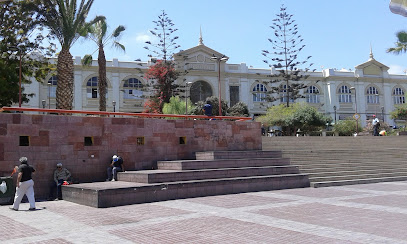
Parque Croacia
Experience the beauty and tranquility of Parque Croacia, a lush urban park in Antofagasta perfect for relaxation and outdoor activities.
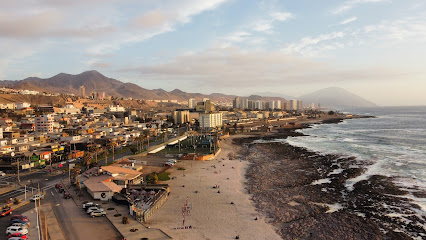
Plaza Colón
Experience the vibrant culture and natural beauty of Plaza Colón, a serene city park in the heart of Antofagasta, Chile.
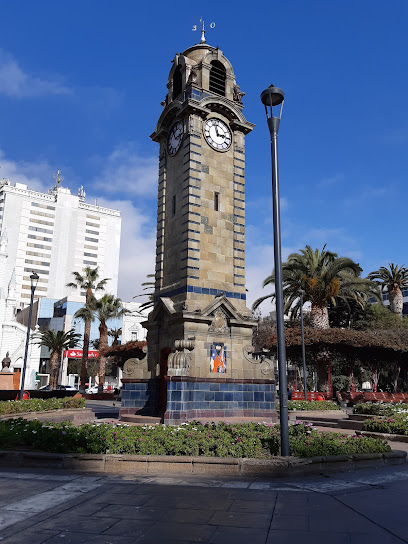
Hand of the Desert
Explore the Hand of the Desert, an iconic sculpture in Antofagasta that blends art and nature in the breathtaking Atacama Desert.

Muelle Salitrero Compañía Melbourne Clark
Explore the historical significance and coastal beauty of Muelle Salitrero Compañía Melbourne Clark in Antofagasta, Chile.
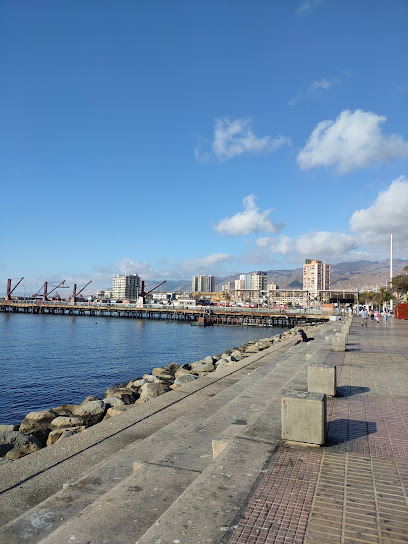
Playa Paraíso
Discover the serene beauty of Playa Paraíso in Antofagasta, a perfect beach destination for relaxation, recreation, and stunning ocean views.
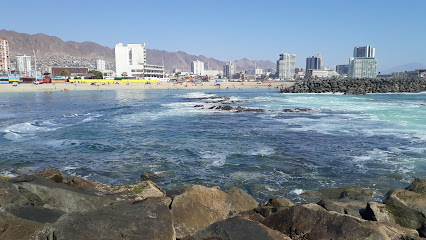
Parque Nicolás Tirado
Experience the natural beauty and cultural charm of Parque Nicolás Tirado in Antofagasta, a serene state park perfect for relaxation and exploration.
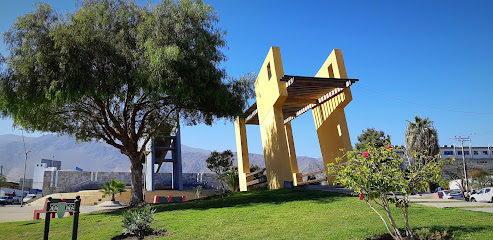
Huanchaca Cultural Park
Explore the heart of Antofagasta at Huanchaca Cultural Park, where history, art, and nature intertwine in a captivating cultural experience.
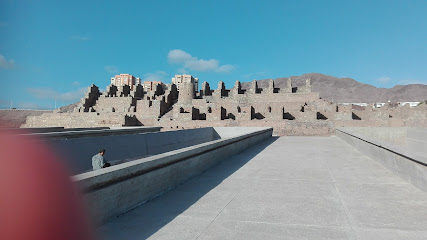
Paseo del Mar Antofagasta
Experience the stunning Paseo del Mar in Antofagasta, where coastal beauty meets vibrant culture and leisure.
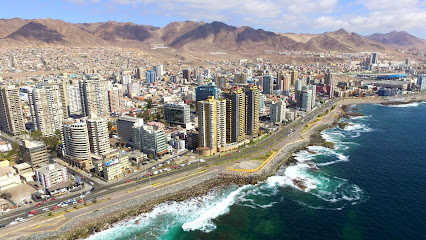
Huanchaca Ruins Museum
Uncover the rich history of Antofagasta at the Huanchaca Ruins Museum, a captivating heritage site blending culture and heritage.
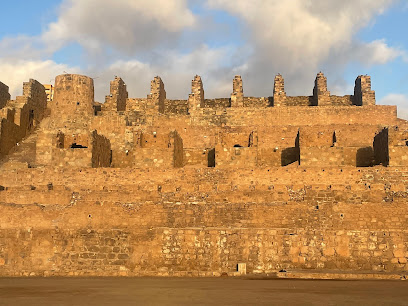
Museo Regional de Antofagasta
Explore the rich cultural heritage of Antofagasta at the Museo Regional de Antofagasta, a captivating museum showcasing history, art, and natural wonders.
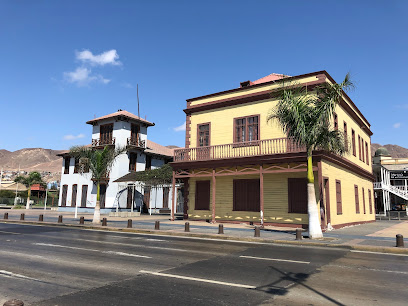
Hito Tropic of Capricorn
Discover the Hito Tropic of Capricorn in Antofagasta, Chile - a monumental landmark marking a significant geographical point on Earth.
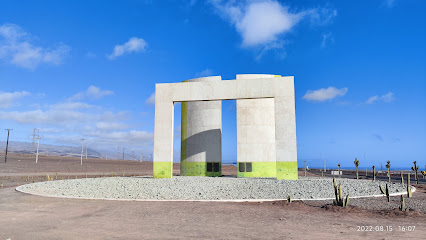
Catedral de Antofagasta
Discover the beauty and history of Catedral de Antofagasta, a stunning neogothic church symbolizing faith and culture in Chile's coastal city.
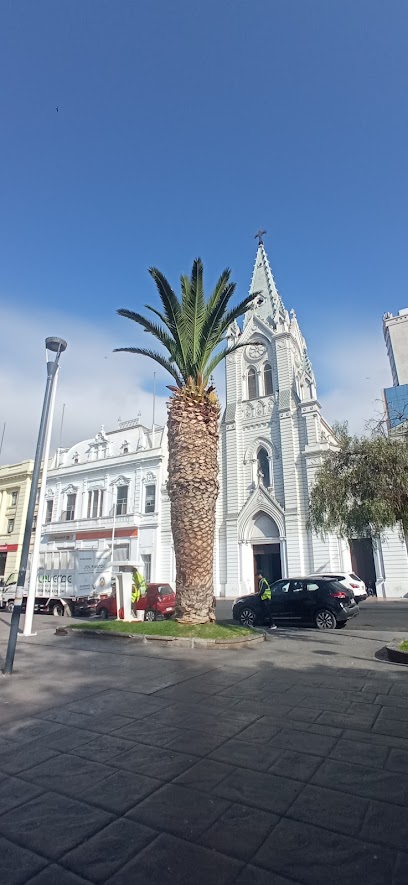
Cerro El Ancla
Discover the breathtaking vistas and unique biodiversity at Cerro El Ancla, a stunning natural monument in Antofagasta, Chile.

Antofagasta Chile Temple
Experience the peaceful allure of the Antofagasta Chile Temple, a stunning architectural marvel set in a tranquil coastal landscape, ideal for spiritual reflection.
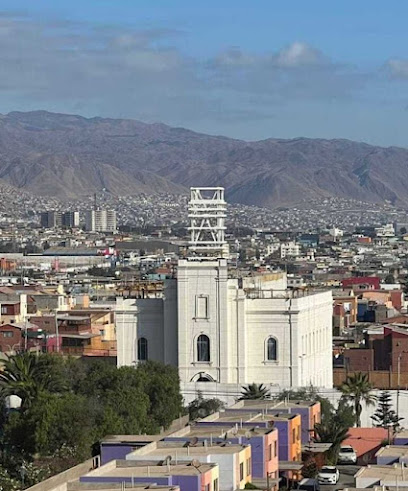
Unmissable attractions to see
Playa Trocadero
Explore Playa Trocadero, a stunning beach in Antofagasta, perfect for relaxation, water sports, and enjoying breathtaking Pacific sunsets.

Mercado Central de Antofagasta
Discover the authentic Chilean experience at Mercado Central de Antofagasta, where vibrant flavors and local culture come alive.

Plaza Colón
Discover Plaza Colón in Antofagasta, a vibrant city park offering lush landscapes, cultural events, and a glimpse into local life.
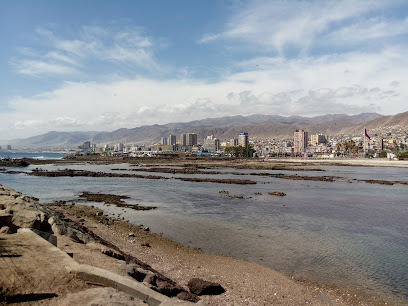
Muelle Salitrero Compañía Melbourne Clark
Explore Muelle Salitrero Compañía Melbourne Clark in Antofagasta, where Chile's saltpeter history comes alive against stunning seaside vistas.
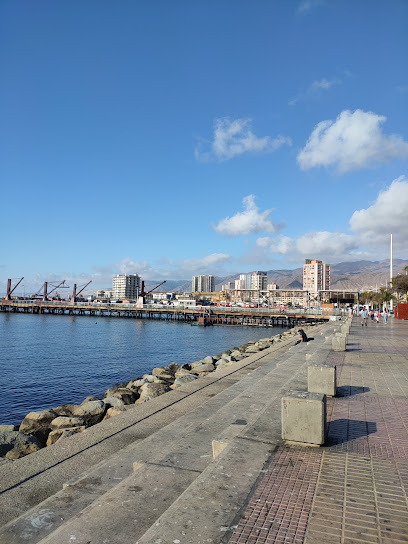
Playa Paraíso
Explore Playa Paraíso in Antofagasta, Chile - a pristine beach destination perfect for relaxation, water sports, and stunning sunsets.
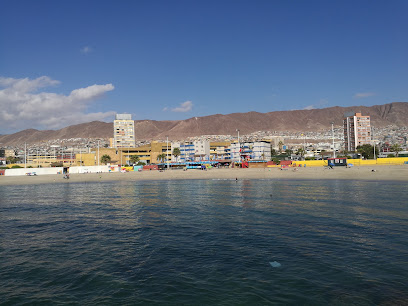
Mejillones, Playa
Explore the stunning Mejillones, Playa in Antofagasta, Chile - a perfect blend of sun, sea, and local culture for unforgettable memories.
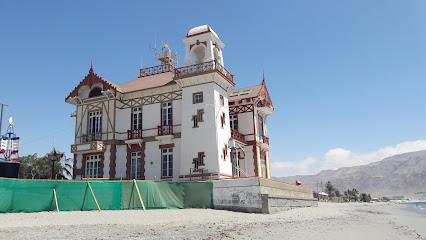
Japonés Park
Experience the tranquility of Japonés Park, a lush urban oasis in Antofagasta, perfect for relaxation and nature lovers alike.
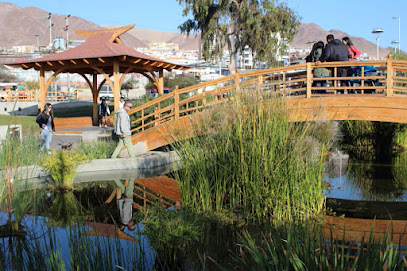
Parque Nicolás Tirado
Explore the natural beauty and tranquility of Parque Nicolás Tirado, a serene state park in the heart of Antofagasta, Chile, perfect for relaxation and recreation.

Antofagasta Municipal Theater
Discover the cultural heartbeat of Antofagasta at the Municipal Theater, where stunning performances and historic charm await every visitor.

Huanchaca Cultural Park
Discover the rich cultural heritage of Antofagasta at Huanchaca Cultural Park, an iconic landmark blending history, art, and nature.
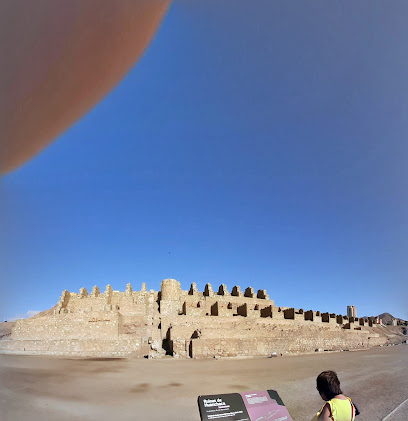
Paseo del Mar Antofagasta
Experience the vibrant coastal promenade of Paseo del Mar Antofagasta, where stunning ocean views, gardens, and local flavors await.
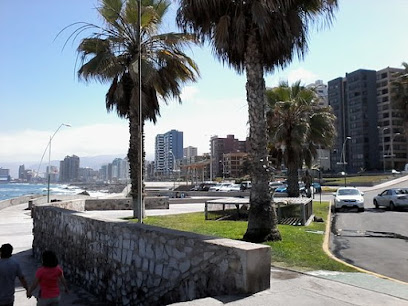
Huanchaca Ruins Museum
Uncover the rich history of Chile's silver mining industry at the Huanchaca Ruins Museum, a captivating heritage site in Antofagasta.
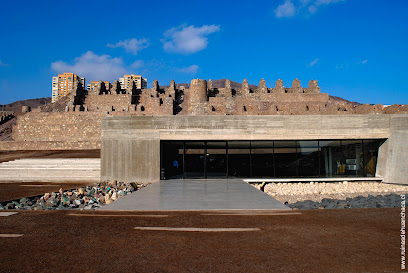
Lagunas Miscanti y Miñiques
Explore the stunning Lagunas Miscanti y Miñiques, a breathtaking natural wonder in the Atacama Desert, perfect for photography and wildlife observation.
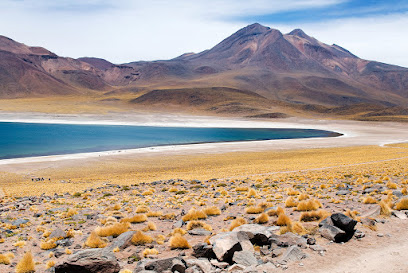
Museo Regional de Antofagasta
Discover the captivating history and vibrant culture of northern Chile at the Museo Regional de Antofagasta, a must-visit museum for all tourists.
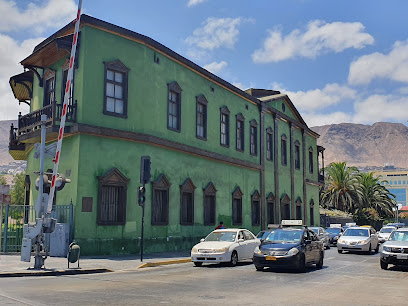
Hito Tropic of Capricorn
Experience the iconic Hito Tropic of Capricorn in Antofagasta, Chile, a breathtaking monument marking the world’s geographical wonders.
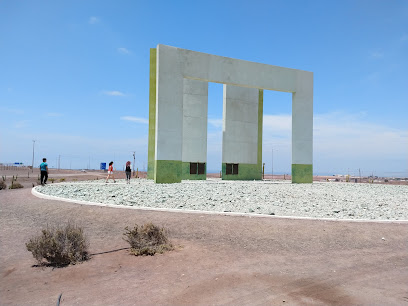
Essential places to dine
Royal Ranch
Experience exquisite local cuisine at Royal Ranch in Antofagasta - where every meal is a celebration of flavor.

Mu Grill House
Discover the art of grilling at Mu Grill House in Antofagasta – where every steak tells a story.
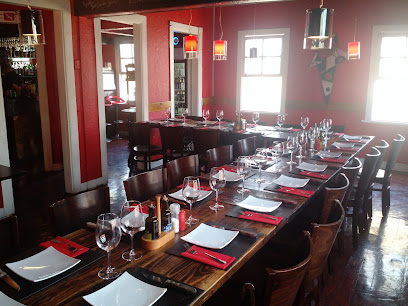
Raconto
Experience the rich flavors of Chile at Raconto, Antofagasta's premier restaurant offering diverse culinary delights in an inviting atmosphere.
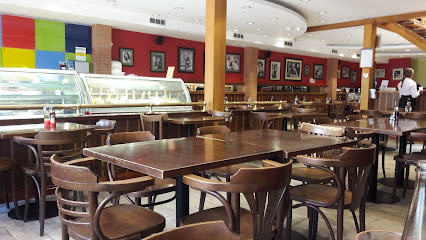
Amares Bistro
Discover exquisite Chilean cuisine at Amares Bistro in Antofagasta - where local flavors meet global culinary artistry.
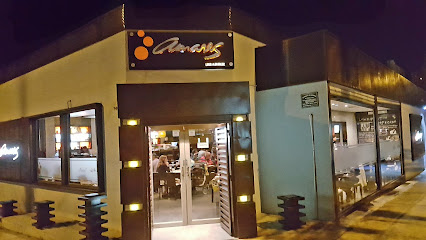
ZENMÔRI Asian Street Food
Experience authentic Asian grilling at ZENMÔRI Asian Street Food in Antofagasta - where every bite tells a story.
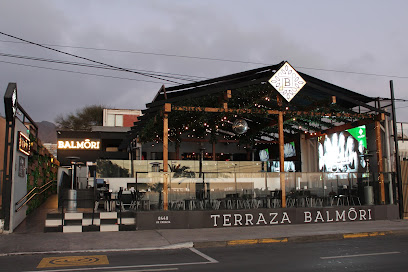
Chile Lindo Restaurant
Experience authentic Chilean cuisine at Chile Lindo Restaurant in Antofagasta – where every dish tells a story.
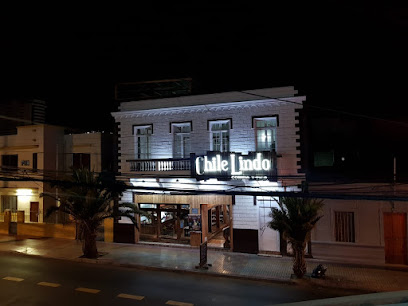
La Costa Verde
Discover authentic Peruvian flavors at La Costa Verde in Antofagasta – a must-visit culinary destination with stunning ocean views.
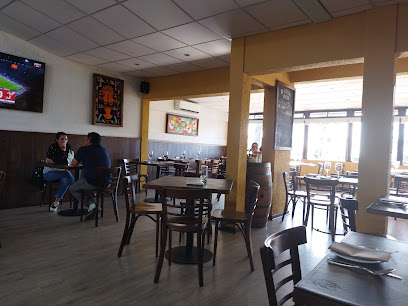
Aurora
Experience authentic Chilean cuisine at Aurora in Antofagasta – where every dish tells a story.
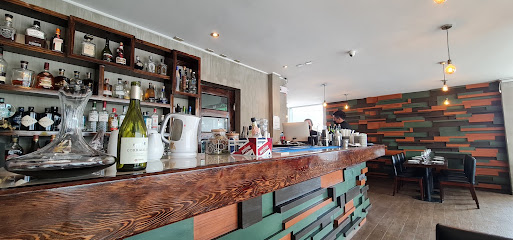
Tío Jacinto
Experience the flavors of coastal Chile at Tío Jacinto - where fresh seafood meets unforgettable dining in Antofagasta.
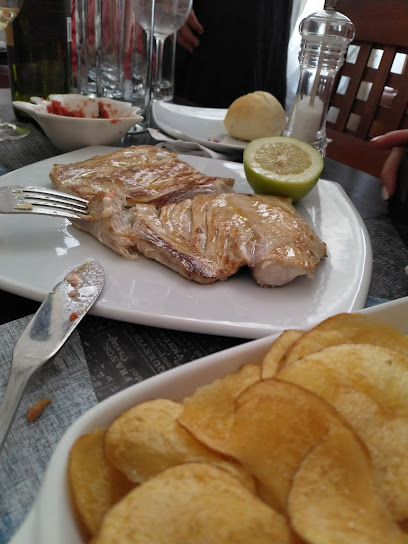
LA MAISON ANTOFAGASTA
Discover La Maison Antofagasta: where gourmet dining meets artisanal baking in a vibrant coastal atmosphere.
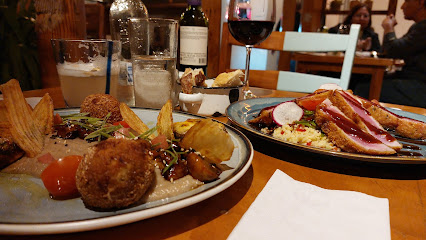
Perú Piscomar Antofagasta
Experience authentic Peruvian cuisine at Perú Piscomar in Antofagasta - a culinary gem offering vibrant flavors and unforgettable dishes.
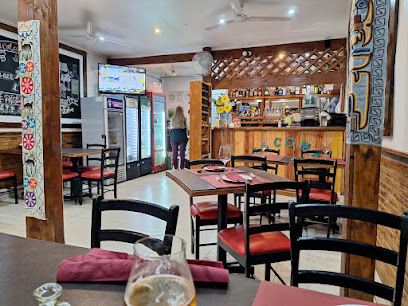
De Antaño
Experience the best of Chilean cuisine at De Antaño in Antofagasta - where tradition meets modern culinary artistry.

SUBMARINO RESTAURANT
Discover the authentic flavors of Chile at Submarino Restaurant in Antofagasta - your gateway to exquisite seafood dishes and local culinary delights.
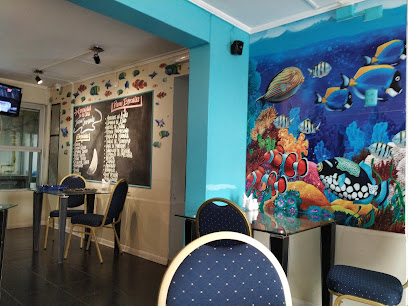
Restaurante Pescados Mariscos PUERTO VIEJO
Discover authentic Chilean flavors at Restaurante Pescados Mariscos PUERTO VIEJO, where fresh seafood meets warm hospitality in Antofagasta.
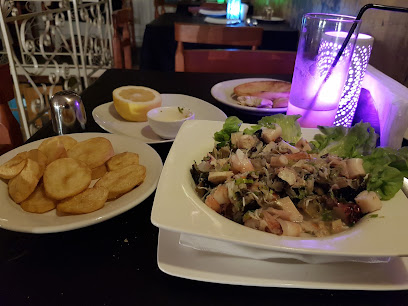
Restaurant Cuzco
Discover the vibrant flavors of Chile at Restaurant Cuzco in Antofagasta—where culinary tradition meets modern flair.
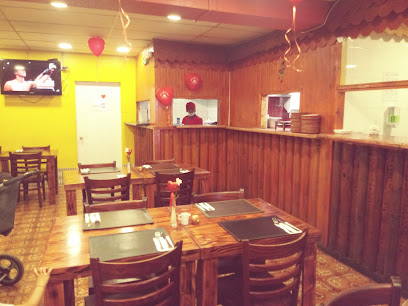
Markets, malls and hidden boutiques
Mallplaza Antofagasta
Discover a vibrant shopping experience at Mallplaza Antofagasta, featuring diverse stores, delightful dining, and family-friendly entertainment.
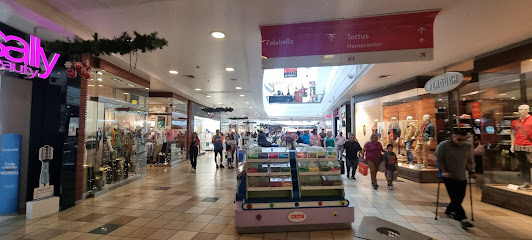
Pacific Mall
Discover the bustling Pacific Mall in Antofagasta, a shopping paradise filled with diverse brands, delicious food, and vibrant entertainment options.
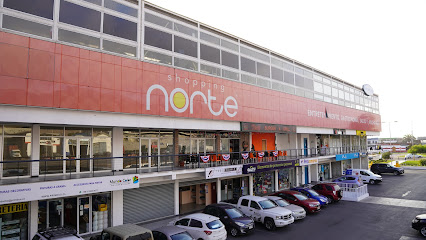
Anime Essential Store
Explore the vibrant Anime Essential Store in Antofagasta for an unforgettable shopping experience filled with trading cards and anime collectibles.
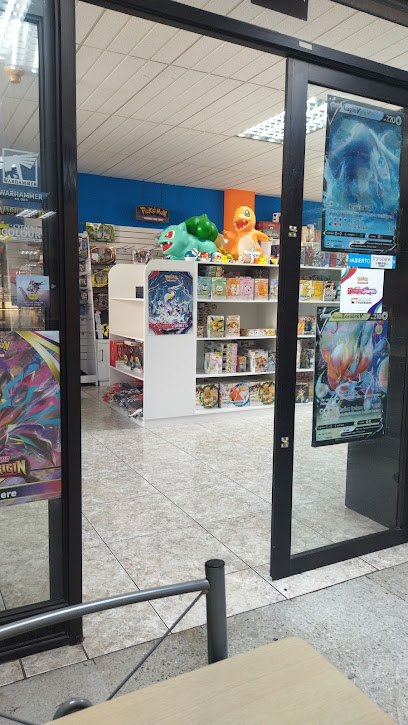
Tienda Glamcity
Explore Tienda Glamcity in Antofagasta for stylish clothing and fashion accessories that capture the essence of modern Chilean fashion.

LA GEEK STORE
Explore La Geek Store in Antofagasta for a unique blend of geek culture apparel and creative drafting services, perfect for every fan.
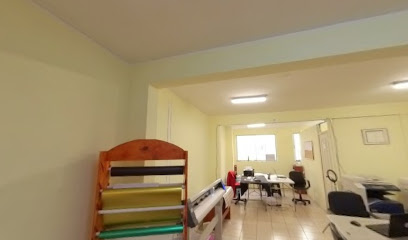
Shangri-la Growshop Local #35 Segundo nivel Galeria Siglo
Discover the essence of Antofagasta at Shangri-la Growshop, your go-to destination for unique local products and crafts in a vibrant shopping atmosphere.
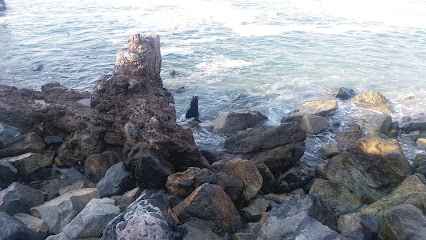
Owl Store
Explore the Owl Store in Antofagasta for unique women's fashion, blending style and local flair for an unforgettable shopping experience.
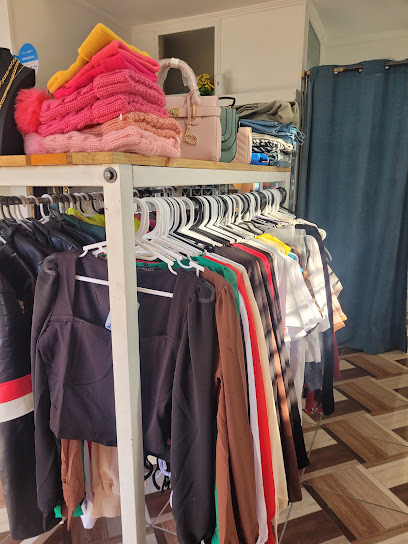
Antofagasta Stores Co
Discover the vibrant shopping experience at Antofagasta Stores Co, where local culture meets diverse product offerings in the heart of Chile's coastal gem.
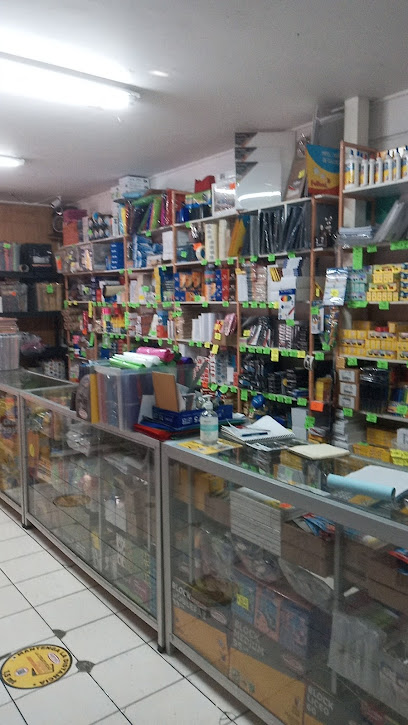
Otra Tienda
Explore Otra Tienda in Antofagasta for exquisite handcrafted jewelry, unique leather goods, and beautiful fashion accessories.

Tienda Mulan
Explore the latest youth fashion trends at Tienda Mulan in Antofagasta, where style meets affordability and local flair.

Bazar Kelanas Antofagasta Chile.
Explore Bazar Kelanas in Antofagasta for unique home goods and authentic Chilean souvenirs, reflecting the vibrant culture of the region.

Kandel Exclusive Clothes
Explore Kandel Exclusive Clothes in Antofagasta for trendy fashion and unique styles that elevate your wardrobe with quality and elegance.
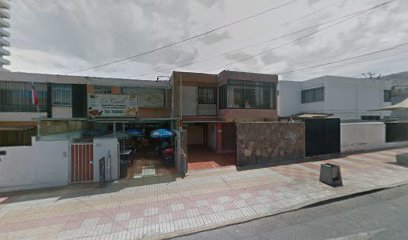
Tienda Boutique Ropa Colombiana
Explore vibrant Colombian fashion at Tienda Boutique Ropa Colombiana, a premier destination for beachwear and trendy clothing in Antofagasta.

Lastanza Boutique
Explore Lastanza Boutique in Antofagasta for chic women's clothing and unique fashion accessories that elevate your style.

KSHOOP
Discover KSHOOP in Antofagasta, where trendy clothing meets a vibrant shopping experience perfectly blended with local culture.

Essential bars & hidden hideouts
Bar Nómade
Discover the vibrant flavors of Antofagasta at Bar Nómade, where delicious grilled dishes meet a lively atmosphere.
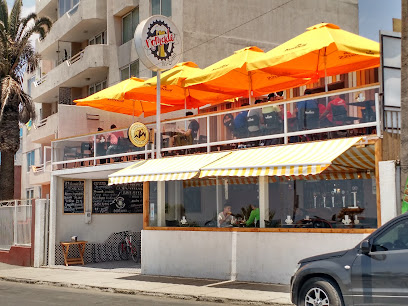
Bundes
Discover the vibrant ambiance, delicious cuisine, and lively entertainment at Bundes Bar, a top destination in Antofagasta for tourists.
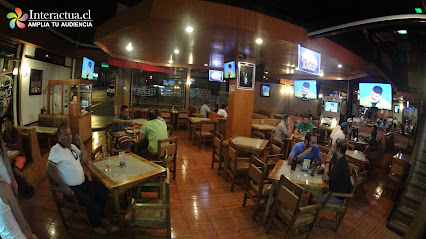
Maldita Barra
Experience the excitement of sports and delicious cuisine at Maldita Barra, Antofagasta's ultimate sports bar destination.
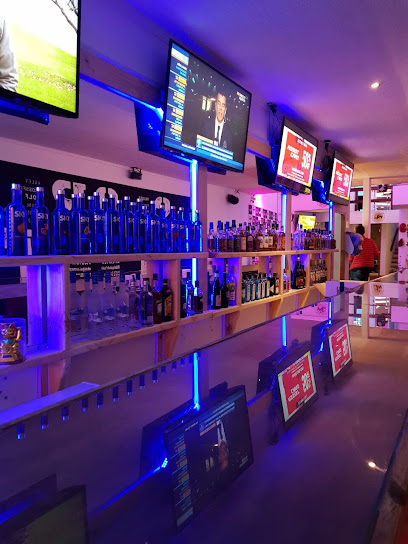
Étnico
Explore the lively nightlife of Antofagasta at Étnico, where great drinks and vibrant atmosphere await every night.
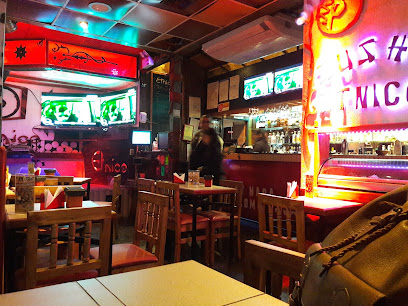
TORO BRAVO Tapas Bar
Indulge in a culinary journey at TORO BRAVO Tapas Bar, where vibrant tapas meet a lively pub atmosphere in Antofagasta.
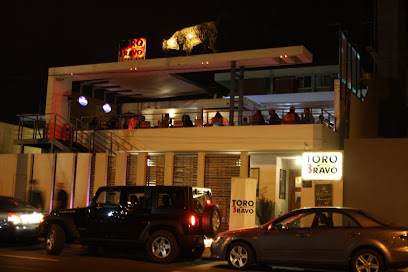
Bardos Antofagasta
Discover Bardos Antofagasta: A vibrant gastropub offering exquisite pizza, craft beers, and live music in a cozy atmosphere.

Enkai Bar
Discover the lively Enkai Bar in Antofagasta, where delicious cuisine meets a vibrant nightlife experience in a stunning coastal setting.
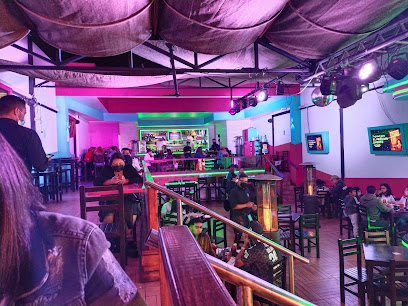
Jardin Nomade
Discover Jardin Nomade, Antofagasta's lively bar and restaurant, where local flavors meet vibrant nightlife in a welcoming atmosphere.
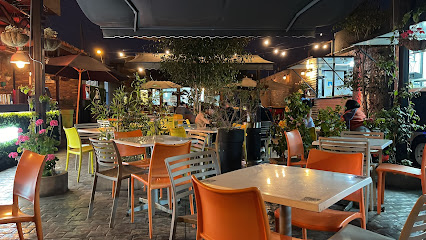
Ciroko
Discover the vibrant nightlife at Ciroko, Antofagasta's premier bar, offering exquisite drinks and an unforgettable atmosphere.
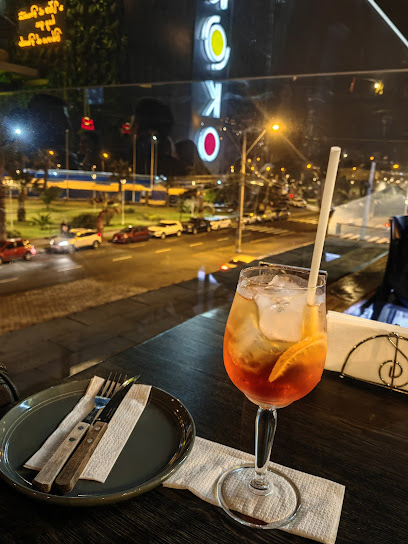
Bronco
Experience the vibrant nightlife of Antofagasta at Bronco, a lively bar offering a diverse drink selection and a welcoming atmosphere.
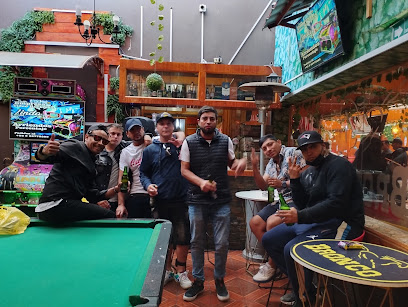
Steine Restobar
Experience the best of Antofagasta at Steine Restobar, where exquisite grilled dishes meet lively karaoke nights for an unforgettable dining experience.
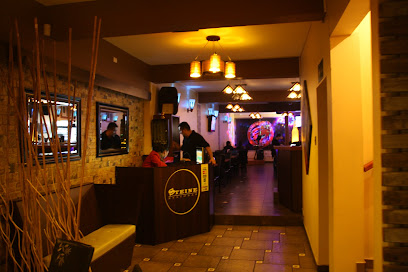
Boliche Resto Pub
Explore the vibrant flavors of Boliche Resto Pub, Antofagasta's premier grill restaurant, offering an unforgettable dining experience with local charm.
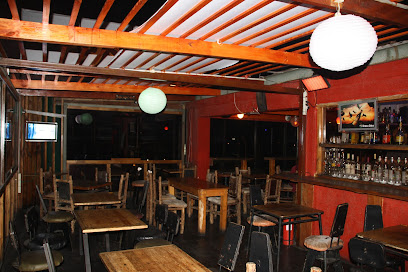
PanteraBar
Experience the vibrant nightlife of Antofagasta at PanteraBar, where local flavors and lively entertainment come together.
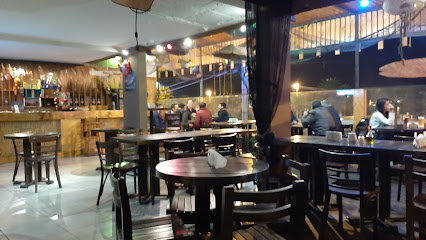
Rucaray
Discover Rucaray, a vibrant pub in Antofagasta, where great drinks and a lively atmosphere await every visitor.
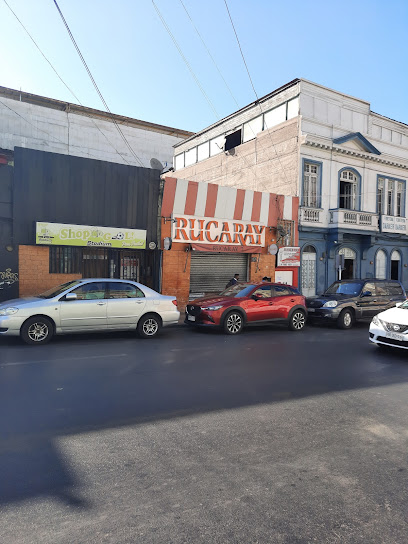
FIREHOUSE BAR
Experience the vibrant nightlife and delectable cuisine at Firehouse Bar, a premier gastropub in Antofagasta, Chile.
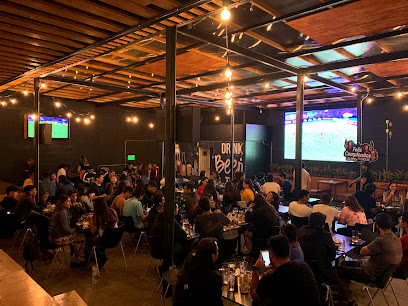
Local Phrases
-
- HelloHola
[oh-la] - GoodbyeAdiós
[ah-di-ohs] - YesSí
[see] - NoNo
[no] - Please/You're welcomePor favor/De nada
[por fah-vor/de nah-dah] - Thank youGracias
[grah-syahs] - Excuse me/SorryPerdón
[pehr-dohn] - How are you?¿Cómo estás?
[koh-moh ehs-tahs] - Fine. And you?Bien. ¿Y tú?
[byen. ee too] - Do you speak English?¿Hablas inglés?
[ah-blahs een-glehs] - I don't understandNo entiendo
[no ehn-tyen-doh]
- HelloHola
-
- I'd like to see the menu, pleaseMe gustaría ver el menú, por favor
[meh goos-tah-ree-ah behr ehl meh-noo, por fah-vor] - I don't eat meatNo como carne
[no koh-moh kahr-neh] - Cheers!¡Salud!
[sah-lood] - I would like to pay, pleaseMe gustaría pagar, por favor
[meh goos-tah-ree-ah pah-gar, por fah-vor]
- I'd like to see the menu, pleaseMe gustaría ver el menú, por favor
-
- Help!¡Ayuda!
[ah-yoo-dah] - Go away!¡Vete!
[veh-teh] - Call the Police!¡Llame a la policía!
[yah-meh ah lah poh-lee-see-ah] - Call a doctor!¡Llame a un médico!
[yah-meh ah oon meh-dee-koh] - I'm lostEstoy perdido
[ehs-toy pehr-dee-doh] - I'm illEstoy enfermo
[ehs-toy ehn-fehr-moh]
- Help!¡Ayuda!
-
- I'd like to buy...Me gustaría comprar...
[meh goos-tah-ree-ah kohm-prahr...] - I'm just lookingSolo estoy mirando
[soh-loh ehs-toy mee-rahn-doh] - How much is it?¿Cuánto cuesta?
[kwan-to kweh-stah] - That's too expensiveEsto es muy caro
[ehs-toh ehs moo-ee kah-roh] - Can you lower the price?¿Puede bajar el precio?
[pweh-deh bah-har ehl pree-syoh]
- I'd like to buy...Me gustaría comprar...
-
- What time is it?¿Qué hora es?
[keh oh-rah ehs] - It's one o'clockEs la una
[ehs lah oo-nah] - Half past (10)Son las diez y media
[sohn lahs dyehs ee myeh-dyah] - MorningMañana
[mah-nyah-nah] - AfternoonTarde
[tahr-deh] - EveningNoche
[noh-cheh] - YesterdayAyer
[ah-yehr] - TodayHoy
[oy] - TomorrowMañana
[mah-nyah-nah] - 1Uno
[oo-noh] - 2Dos
[dohs] - 3Tres
[trehs] - 4Cuatro
[kwah-troh] - 5Cinco
[seeng-koh] - 6Seis
[seys] - 7Siete
[syeh-teh] - 8Ocho
[oh-choh] - 9Nueve
[nweh-veh] - 10Diez
[dyehs]
- What time is it?¿Qué hora es?
-
- Where's a/the...?¿Dónde está...?
[dohn-deh ehs-tah] - What's the address?¿Cuál es la dirección?
[kwal ehs lah dee-rehk-syon] - Can you show me (on the map)?¿Puede mostrarme (en el mapa)?
[pweh-deh mohs-trar-meh (ehn ehl mah-pah)] - When's the next (bus)?¿Cuándo es el próximo (bus)?
[kwan-doh ehs ehl proh-ksy-moh (boos)] - A ticket (to ....)Un boleto (a ....)
[oon boh-leh-toh (ah)]
- Where's a/the...?¿Dónde está...?
History of Antofagasta
-
Antofagasta was officially founded on February 14, 1879. The area had been inhabited by indigenous peoples for centuries, but it was during the late 19th century that it began to attract attention due to its rich mineral resources. The discovery of nitrate deposits and the subsequent mining boom led to the establishment of the city as a key port and commercial center.
-
Antofagasta played a pivotal role during the War of the Pacific (1879-1884), a conflict involving Chile, Bolivia, and Peru. The war started over disputes regarding control of nitrate-rich areas in the Atacama Desert. Chilean forces occupied Antofagasta, which was then part of Bolivia, leading to a series of battles. The Treaty of Ancón, signed in 1884, resulted in Chile gaining permanent control of Antofagasta.
-
The late 19th and early 20th centuries saw Antofagasta flourish due to the nitrate trade, which was essential for fertilizers and explosives. The city grew rapidly as a result of the economic boom. However, the development of synthetic nitrates in the early 20th century led to a decline in the industry. This economic shift forced Antofagasta to diversify its economy and focus on other mining activities, particularly copper.
-
Located about 110 kilometers from Antofagasta, Chacabuco is a former nitrate town that has been preserved as a historical monument. Founded in 1924, Chacabuco was abandoned in the late 1930s due to the decline of the nitrate industry. During the military dictatorship in the 1970s, it was used as a concentration camp for political prisoners. Today, it stands as a haunting reminder of both the nitrate era and the darker periods of Chilean history.
-
Following the decline of the nitrate industry, Antofagasta shifted its focus to copper mining. The city is now home to some of the world's largest copper mines, including the Escondida mine, which is the largest copper mine on the planet. This industry has revitalized the local economy and turned Antofagasta into a modern, bustling city with a significant expatriate community.
-
Due to its history as a mining hub, Antofagasta has attracted a diverse array of immigrants, including people from Europe, Asia, and other parts of Latin America. This cultural melting pot has greatly influenced the city's architecture, cuisine, and festivals. Landmarks like the Muelle Histórico (Historic Dock) and the Plaza Colón reflect this blend of cultures.
-
Today, Antofagasta is a thriving city and the capital of the Antofagasta Region. It serves as a vital gateway to northern Chile and is known for its modern infrastructure, educational institutions, and cultural attractions. The city's economy is still heavily reliant on mining, but tourism and services have also become important sectors. Antofagasta's coastal location and proximity to natural wonders like the Atacama Desert make it a unique destination for travelers.
Antofagasta Essentials
-
Antofagasta is located in northern Chile along the Pacific coast. The most common way to get there is by flying into Andrés Sabella Gálvez International Airport (ANF), which is approximately 25 kilometers north of the city center. Several airlines offer flights to ANF from major cities such as Santiago, La Serena, and Iquique. Alternatively, you can take a long-distance bus from Santiago, which takes around 20 hours, or drive via Route 5 (Pan-American Highway), which offers scenic views of the Atacama Desert.
-
Within Antofagasta, public transportation includes buses and colectivos (shared taxis). Buses are affordable and cover most parts of the city, including tourist attractions and commercial areas. Colectivos follow set routes and are a bit more expensive than buses but are still a budget-friendly option. Taxis are also available and can be hailed on the street or booked via phone or apps. Renting a car is an option for those who prefer to explore the surrounding areas at their own pace.
-
The official currency in Chile is the Chilean Peso (CLP). Credit and debit cards are widely accepted in hotels, restaurants, and larger shops. However, it is advisable to carry some cash for smaller establishments, street vendors, and public transportation. ATMs are readily available throughout Antofagasta, including at the airport, major malls, and banks.
-
Antofagasta is generally a safe city for tourists, but it is important to stay vigilant. Avoid walking alone at night, especially in less populated areas like La Chimba and Bonilla. Keep an eye on your belongings in crowded places such as markets and bus terminals. Stick to well-lit and busy streets, and use licensed taxis or ride-sharing services for nighttime travel.
-
In case of an emergency, dial 133 for police, 131 for medical emergencies, and 132 for the fire department. The Hospital Regional de Antofagasta is the main medical facility in the city and provides comprehensive medical services. It is advisable to have travel insurance that covers medical emergencies. Pharmacies are available throughout the city for minor health issues and over-the-counter medications.
-
Fashion: Do dress comfortably and in layers, as the weather can be variable. Avoid overly revealing clothing, especially in more traditional areas. Religion: Do respect local customs, particularly in religious sites. Public Transport: Do have small change ready for bus fares and be respectful to the driver and fellow passengers. Greetings: Do greet people with a simple 'Hola' or 'Buenos días/tardes'. A handshake is common in formal settings. Eating & Drinking: Do try local dishes such as empanadas and seafood. Don’t refuse food or drink offerings as it may be considered impolite.
-
To experience Antofagasta like a local, visit the Mercado Central where you can find fresh seafood and local produce. Walk along the Costanera to enjoy the coastal views and the iconic La Portada rock formation. Engage with locals, who are generally friendly and willing to share insights about the city's history and culture. Don't miss the opportunity to visit nearby attractions like the Atacama Desert and the Mano del Desierto sculpture.
Trending Landmark in Antofagasta
-
Mercado Central de Antofagasta
-
Parque Croacia
-
Plaza Colón
-
Hand of the Desert
-
Muelle Salitrero Compañía Melbourne Clark
-
Playa Paraíso
-
Parque Nicolás Tirado
-
Huanchaca Cultural Park
-
Paseo del Mar Antofagasta
-
Huanchaca Ruins Museum
-
Museo Regional de Antofagasta
-
Hito Tropic of Capricorn
-
Catedral de Antofagasta
-
Cerro El Ancla
-
Antofagasta Chile Temple
Nearby Cities to Antofagasta
-
Things To Do in San Pedro de Atacama
-
Things To Do in Iquique
-
Things To Do in Uyuni
-
Things To Do in Salta
-
Things To Do in Arica
-
Things To Do in Tacna
-
Things To Do in San Miguel de Tucumán
-
Things To Do in Tarija
-
Things To Do in Potosi
-
Things To Do in La Serena
-
Things To Do in Coquimbo
-
Things To Do in Sucre
-
Things To Do in Arequipa
-
Things To Do in Cochabamba
-
Things To Do in La Paz











